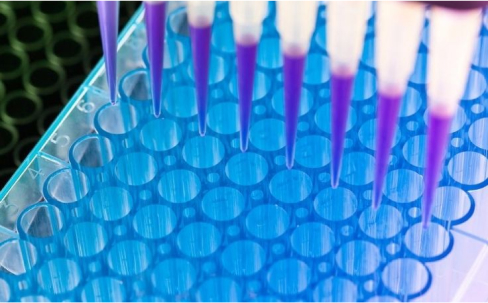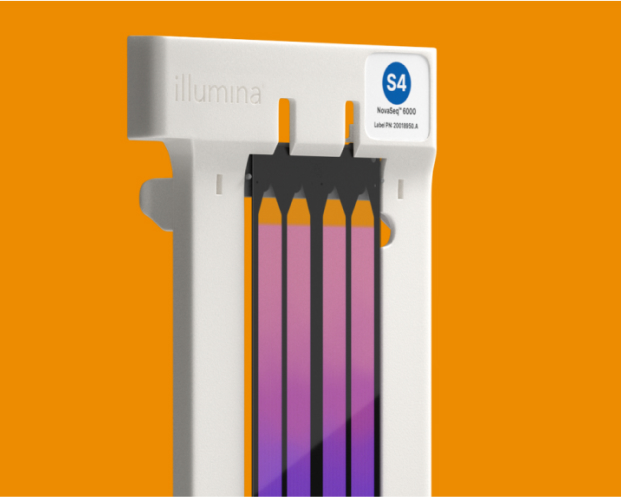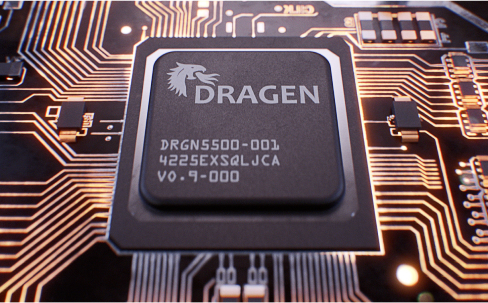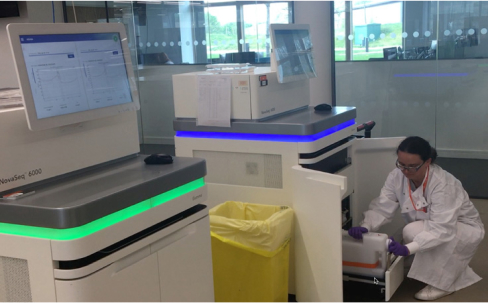
新しいPCRフリー調製により、全ゲノムシーケンスを迅速化
Rady Children’s Institute for Genomic Medicineは、希少な遺伝性疾患を持つ子供の診断時間の記録的な短縮に向けて、Illumina DNA PCR-Free PrepキットとNovaSeq 6000システムを使用しています。
可能性を解き放つ
幅広いサンプルタイプ、手法、アプリケーションにわたるスケーラブルで柔軟なシーケンス

NovaSeq 6000システムはこれまで以上に効率的かつコスト効率よく全ゲノムシーケンス(WGS)を行うことができます その調整可能な出力は、ワークフローを合理化したデュアルフローセルモードで最大6 Tbおよび20Bのリードを生成します。システムを構成して、トリオ解析を1日で、または、最大48のゲノムシーケンスを最大約2日間で、包括的なカバレッジを実現します。
ヒト全ゲノムシーケンスや腫瘍/正常シーケンスなどの高感度アプリケーション用の高性能で迅速な統合PCRフリーのワークフロー。
全ヒトゲノムシーケンス、アンプリコン、プラスミド、微生物ゲノムなど、幅広いアプリケーション用の高速かつ統合されたワークフロー。
すぐに使用できる試薬キットには、NovaSeq 6000 システムで信頼性の高いハイスループットのシーケンスを実現するための試薬カートリッジ、フローセル、バッファーが含まれています。複数のシーケンス出力とリード長オプションが利用可能です。
DRAGEN Germlineアプリ(BaseSpace Sequence HubまたはDRAGEN サーバーで実行)
FASTQファイルからバリアントをアライメントして呼び出し、BAMファイルとVCFファイルを出力します。
DRAGEN Somatic Pipelineアプリ(BaseSpace Sequence HubまたはDRAGEN サーバーで実行)
FASTQファイルから腫瘍のみのバリアントまたは腫瘍と正常なバリアントをアライメントして呼び出し、BAMファイルとVCFファイルを出力します。
ゲノムの2%未満を占める全エクソームシーケンスは、全ゲノムシーケンス解析に代わる費用対効果の高い方法です。NovaSeq 6000システムは、デュアルS4フローセルを使った1ランで、最大500エクソームのシーケンスができます。
Illumina DNA Prep with Enrichment
オンビーズタグメンテーションとターゲットシーケンスアプリケーションのための単一のハイブリダイゼーションプロトコールを組み合わせた、高速で統合されたDNAベースのライブラリー調製およびエンリッチメント。
すぐに使用できる試薬キットには、NovaSeq 6000 システムで信頼性の高いハイスループットのシーケンスを実現するための試薬カートリッジ、フローセル、バッファーが含まれています。複数のシーケンス出力とリード長オプションが利用可能です。
FASTQ、BAM、またはCRAMファイルからバリアントをアライメントして呼び出し、BAMファイルとVCFファイルを出力します。
正常または低品質サンプル中のコーディングおよび複数の形態のノンコーディングRNAを検出します。NovaSeq 6000システムは、デュアルS4フローセルを使った1ランで、最大400トランスクリプトームのシーケンスを可能にします。
Illumina Stranded Total RNA Prep with Ribo-Zero Plus or Ribo-Zero Plus Microbiome
コーディングおよびノンコーディングトランスクリプトーム研究用の広範な種類のサンプルから迅速にライブラリーを調製して、比類ない柔軟性で研究を行うことができます。
すぐに使用できる試薬キットには、NovaSeq 6000 システムで信頼性の高いハイスループットのシーケンスを実現するための試薬カートリッジ、フローセル、バッファーが含まれています。複数のシーケンス出力とリード長オプションが利用可能です。
アライメント、定量化、融合遺伝子検出を含む、RNA転写産物の次世代シーケンサー二次解析。
リソーススポットライト
NovaSeq 6000システムの合理化されたワークフローについてご覧ください。このシステムが高度なハイスループットシーケンスシステムである理由を直接ご確認ください。
RNAコード領域のシーケンス特異的キャプチャーを使用して、コーディングトランスクリプトームの既知および新規の機能の両方を検出します。
RNA-Seqを使用して、RNAベースの薬物応答性バイオマーカーを発見し、プロファイルします。新規ユーザーがこのアプリケーションを使用するためのリソースにアクセスできます。
NovaSeq 6000 システムで何が可能になるかをご覧ください。

Rady Children’s Institute for Genomic Medicineは、希少な遺伝性疾患を持つ子供の診断時間の記録的な短縮に向けて、Illumina DNA PCR-Free PrepキットとNovaSeq 6000システムを使用しています。

クラウドベースのDRAGEN二次解析により、GeneDxはNovaSeq 6000システムを採用してハイスループットの全ゲノムシーケンスを行い、バリアントを精確に同定することができます。

GenOMICCとGenomics Englandは、COVID-19に感染しやすい人々の遺伝因子を明らかにすることを目的とした大規模なシーケンス研究を開始しました。